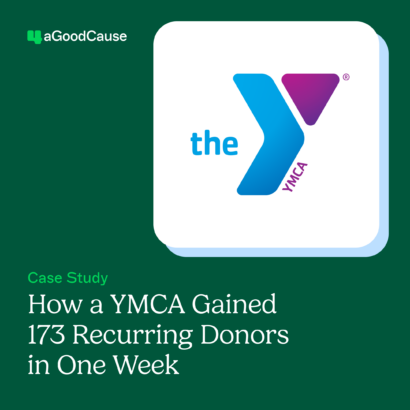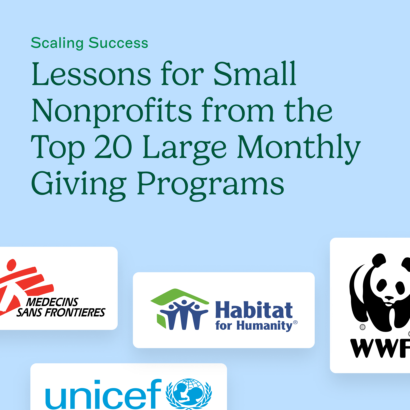Email is a great way to connect with your donors and other supporters of your organization. This communication tool makes it easy for messages to be personalized and land directly in front of your constituents—a far cry from the algorithms that move our coveted messages down the newsfeed when posted on various social media channels.
There are some great ways to ensure your emails not only get to the right reader but that the reader opens those emails and acts. A focused effort on improving email engagement can take your donor communication from ho-hum to great with just a bit of practice.
Measuring email engagement
There are a few ways to measure email engagement and, depending on where you are in your email marketing endeavors, there may be one (or more) that is better for the purposes of tracking your success than others.
- Email open rate: This is the percentage of people who open your email based on the total number of people the email was sent to.
- Email click-through rate: The percentage of people who click on the links within your emails.
- Email conversion rate: The percentage of people who click on your link within your email and complete the action intended (e.g., complete event registration, donate, sign up to volunteer).
Beware of a skewed view of open rates as iOS users now have the ability to turn on their Mail Privacy Protection feature which defaults to counting every email as “opened” but removes your ability to track action data from those who use iOS email tools. You may see an increase in email open rates but take those increases with a grain of salt. Better to keep an eye on your email click-through rates and conversion rates for a more definitive assessment of your email success rates.
How to set your nonprofit emails up for success
Put your best email foot forward and think about the following elements to grow your email engagement.
1. Grow your list the right way.
Never purchase an email list. Add emails to your list organically through website sign-ups, social media, events and donation opt-in confirmations. This ensures that the people on your list want to hear from you instead of sending emails to a list of random people who are more apt to opt-out or unsubscribe.
2. Utilize double opt-in features.
Once your subscribers sign up for your email list, use the double opt-in to ensure they really want to be on your list and that the email they used to sign up is a valid email address.
3. Craft enticing email subject lines.
Keep your email subject lines short, sweet and inviting. We have a list of 30 great fundraising email subject lines to get you started.
4. Personalize and segment.
Did you know that personalized emails have a 27% higher open rate and an 11% higher click-through rate than emails that are generic in nature? Personalize the ‘to’ field on the inside of the email with auto-fills synced from your database; do the same with your subject lines from time to time. In addition, use tags to send specific emails to certain categories of people on your list—volunteers, donors, major givers, event attendees—your audience is more likely to open and read an email that they know is designed just for them.
5. Humanize who each email is from.
Instead of using generic ‘from’ email addresses (e.g., ‘info@’ or ‘volunteers@’) use a live email address that belongs to someone within your organization. Take it ever further by having that person ‘sign’ the emails in closing.
6. Design easy calls-to-action.
Don’t send readers to your home page—be specific with the links in your emails by sending them directly to the pages where you want them to act. This can be your fundraising landing page, event registration page or volunteer sign-up page. Use a single, clear call-to-action; take the guesswork out for your readers.
7. Use a simple, mobile-friendly design.
Forty-six percent of emails are opened on mobile devices—make sure yours looks good when opened. Think text-rich, single-column emails with limited imagery. Test your emails on a variety of devices so you can see what the readers see.
8. Focus on impact and storytelling.
Use emotional storytelling to pull your readers in—and it doesn’t always have to be a sad story! Happy stories about the power of donations, stories of impact and uplifting stories from volunteers are all great ways to showcase your personality, share your story and engage your readers.
9. Lead them to an easy donation page.
If your email worked, your readers click eagerly to the page on your site where you want them to act—make sure that page is inviting, mobile and easy to navigate, too. Weave the story from your emails to the pages on your website. If they are donation-specific, carry those stories of impact to flesh out the ‘why give’ area of your page. Here are some tips on crafting the ultimate fundraising landing page.
10. Stay consistent.
Whether it’s a welcome email series for all new sign-ups, a monthly e-newsletter or a quarterly update from your executive director, design an email marketing strategy that is consistent and runs on a set schedule. This helps you maintain ongoing touchpoints with donors and allows your donors to continue to get to know your organization throughout the year.
For more email marketing tips, check out our free, on-demand webinar “Email Marketing Tips and Tricks to Engage Donors” and download a copy of our free email marketing calendar template.



